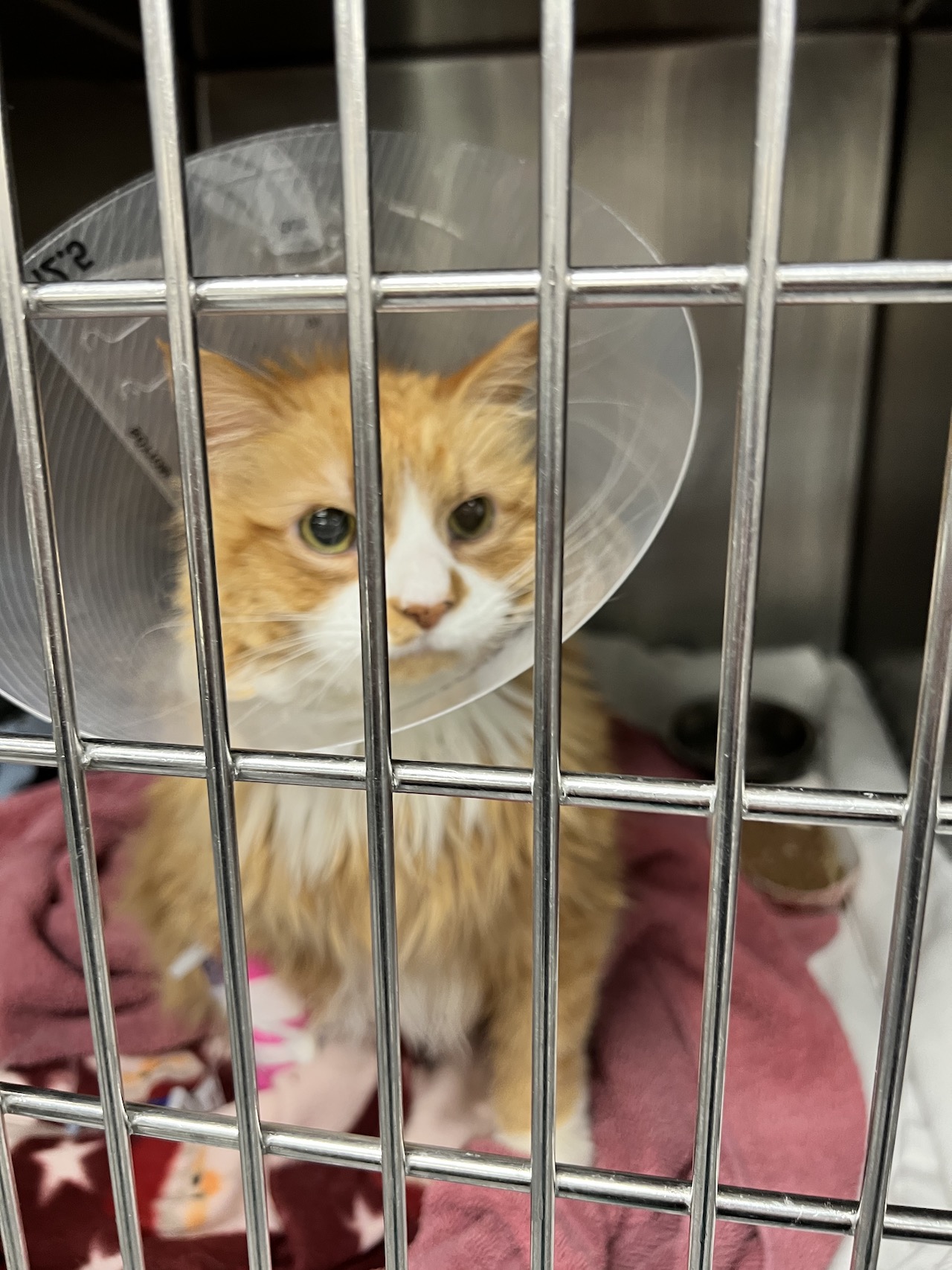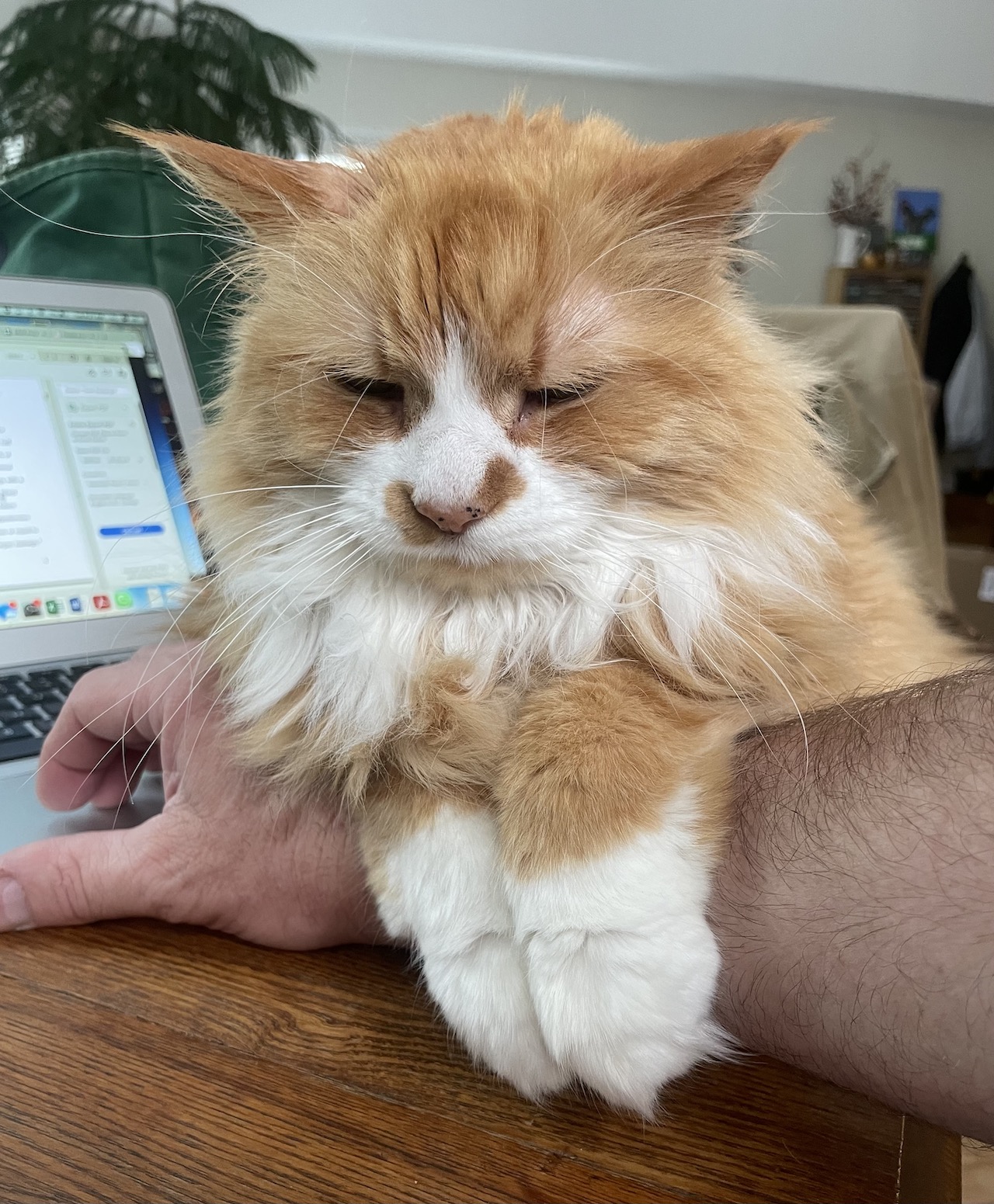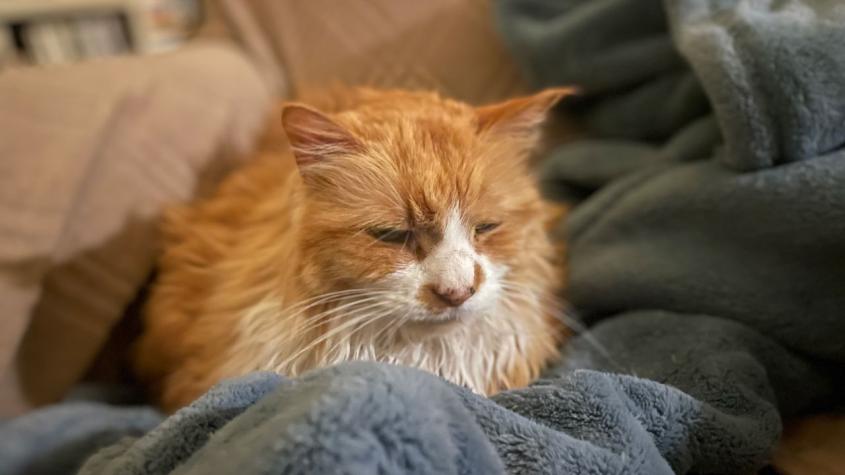Minimally invasive surgery helps cat with early pancreatic cancer
With four cats and three dogs, the Collins household is a boisterous place. When one member of the family, a 16-year-old feline named Quinoa, became lethargic and dull, his owner Dr. Brian Collins immediately knew something was amiss with the domestic longhaired cat.
“Something didn’t seem right. He was still eating, but his pattern of eating and his tastes had changed,” said Collins, who is a senior extension associate at the Cornell Margaret and Richard Riney Canine Health Center. He describes Quinoa as a playful cat that loves his food almost as much as he loves relaxing with his family — so Collins was concerned when he noticed Quinoa was no longer eating his treats in one sitting.
A Cornell veterinarian himself, Collins knew that Quinoa would receive the best care from his colleagues at the Cornell University Hospital for Animals. He brought Quinoa to the hospital in early January, where an abdominal ultrasound revealed, among other things, at least one nodule on his pancreas. After examination and testing, Quinoa was diagnosed with exocrine pancreatic carcinoma, a rare disease responsible for less than half a percent of cancers in dogs and cats.
Dr. Nicole Buote, associate professor in the Section of Small Animal Surgery, led Quinoa’s veterinary team, alongside resident Dr. Alexandra Kuvaldina. “Unfortunately, the symptoms can be vague,” Buote said. “They can range from decreased appetite, lethargy and change of behavior.” Usually, this cancer isn’t detected until it’s very far along, Buote adds.
Exocrine pancreatic carcinoma affects an animal’s pancreas, and the survival rate is unfortunately very low for afflicted animals.
To get the full picture of Quinoa’s condition, his veterinarians placed him under general anesthesia for a CT scan of his chest and abdomen, which revealed an approximately three-centimeter left pancreatic mass, a distal mass, a mildly dilated pancreatic duct, one pulmonary nodule and other nodules over the liver and spleen. The liver nodules were benign, and his care team continues to monitor the splenic and pulmonary masses. However, Buote recommended surgery as the best course of action for the pancreatic nodules.
A traditional surgery for this would typically require a 15–20-centimeter incision on the abdomen, with at least two nights in the hospital. Buote, however, was able to take a more minimally invasive approach, known as a laparoscopic surgery. This type of surgery uses a small incision — in Quinoa’s case, only 5-10 millimeters. A thin tube with a camera on the end is inserted, guiding the surgeon to the targeted area in the abdomen.
“Though he was otherwise in very good health, I was concerned about post-operative pain and recovery at his age, but since Dr. Buote was able to use a minimally invasive approach, I felt much better about it,” Collins said.

“Because we were able to do it with just three small incisions, Quinoa was much more comfortable and was able the leave the hospital the day after surgery,” Buote said.
The American College of Veterinary Surgeons (ACVS) recently named Buote an ACVS Founding Fellow in Minimally Invasive Surgery, selected for her expertise on the practice and for her multidisciplinary approach to the prevention, diagnosis, treatment and rehabilitation of patients. She says that one the most important questions she can ask herself as a clinician is whether she can do a safe, effective procedure laparoscopically instead of with open surgery.
“I am always striving to push the boundaries of minimally invasive surgery so we can cause as little pain to our animal family members as possible,” Buote said, adding that owners should feel comfortable asking veterinarians if there are minimally invasive options available for whatever ails their pets.
In Quinoa’s case, Collins is pleased with his cat’s progress. As soon as he came home, Quinoa was placed on strict rest so that his incisions could heal properly. He is now undergoing chemotherapy to further reduce the cancer and extend his years as a happy, beloved cat in the Collins’ home.
“I feel so fortunate that the minimally invasive surgery option was available,” Collins said. “Not only was the surgery a success, but his appetite returned quickly, he was comfortable and he was able to come home the day after surgery. I’m grateful for all the skilled and compassionate care Quinoa has received throughout the hospital.”

Written by Melanie Greaver Cordova





